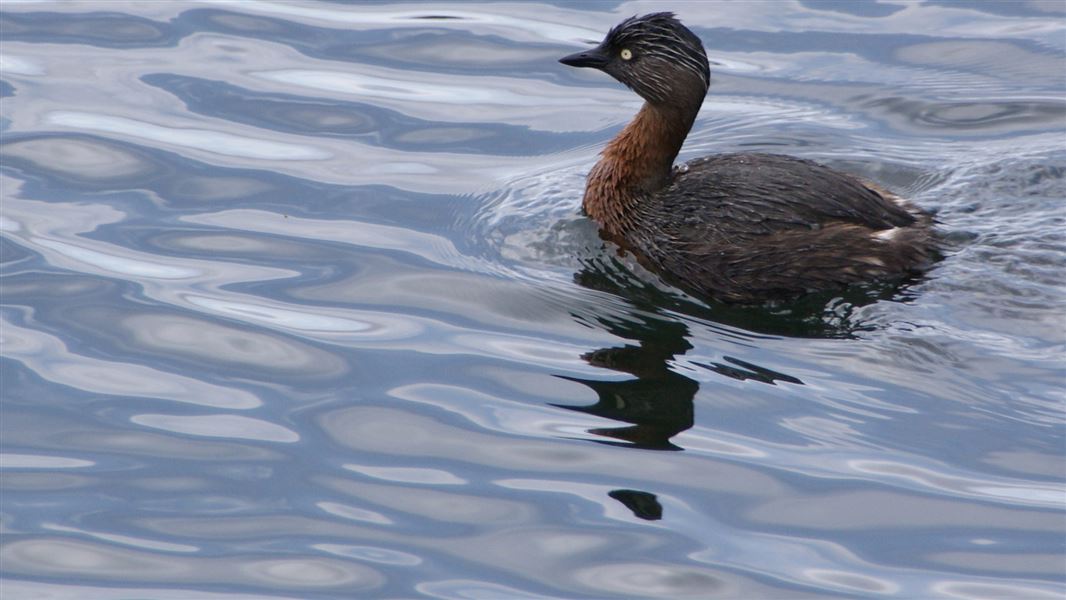New Zealand status: Endemic
Conservation status: Nationally Increasing
Found in: Central North Island in Taupo and Rotorua
Threats: Predation, declining water quality, loss of natural habitat and increased disturbance
Species information: Dabchick/Weweia on NZ Birds Online
Did you know?
Dabchicks dive for their food up to 4 m deep. They can hold their breath for around 40 seconds.
Dabchick conservation
They used to be present in the lakes of the lower South Island but underwent a rapid decline there (for unknown reasons) in the 19th century.
Today, the largest populations are concentrated around the Central North Island in Taupo and Rotorua.
Usually nests are anchored to emergent aquatic vegetation like raupö or sedges, or tree branches that trail into the water. Because the nest is attached to something it doesn’t have much bouyancy, so dabchick nests are very easily swamped by even a small rise in water levels – including boat wash.
Eggs are also vulnerable to predation by Norway rats that like to live near water and are good swimmers.
DOC, alongside volunteers, currently complete bi-annual surveys of dabchick populations with the aim of identifying varying populations.
You can help
Volunteer on dabchick surveys. These run twice a year in different Rotorua lakes. Contact the Rotorua DOC office.
The dabchick breeding season runs from September to December. Avoid getting too close during this time.
